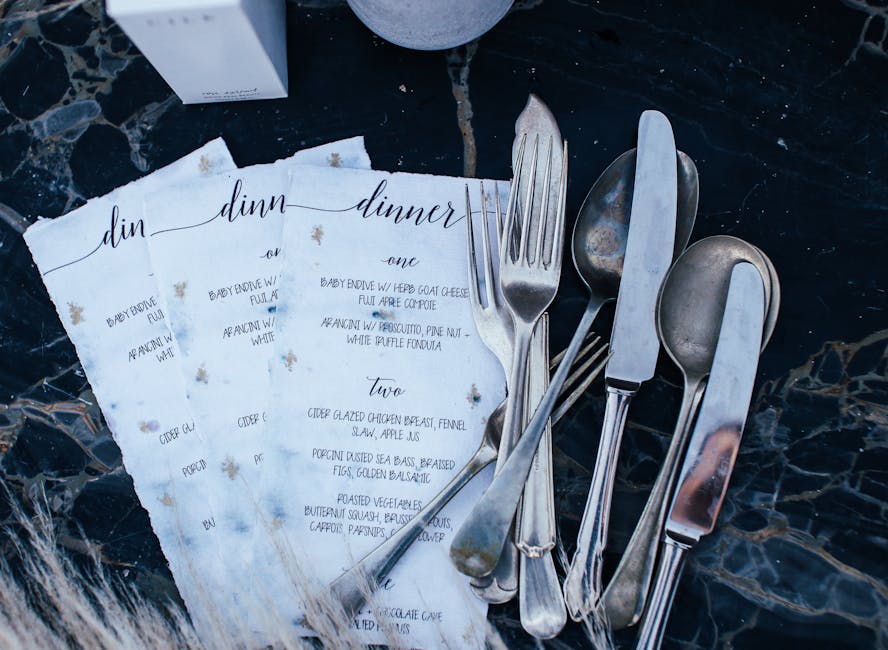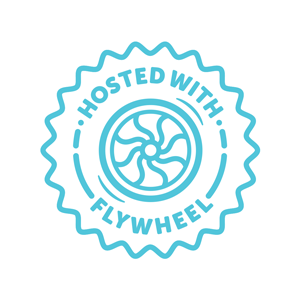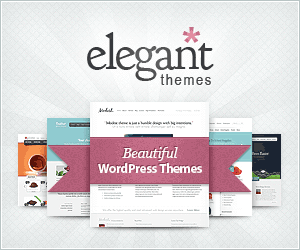Restaurant Menu Design: Top Tips for 2025 Success
Restaurant menu design is more than just listing food items and prices on a piece of paper. It’s about creating a first impression that captures the attention, appetite, and imagination of your customers. A well-designed menu can act as a powerful marketing tool, influence customer choices, and improve their dining experience.
- Importance: A compelling menu design sets the tone for your restaurant’s personality and helps differentiate your eatery from others.
- First Impression: The visual appeal of your menu significantly impacts customers’ perceptions even before they taste the food.
- Marketing Potential: A strategically designed menu is a subtle yet effective marketing device, leading to increased profitability.
I’m Randy Speckman, founder of Randy Speckman Design. With a decade of experience in crafting unique restaurant menu design, my goal is to combine aesthetics and strategy to boost your restaurant’s identity. Let’s explore this essential aspect of restaurant success in detail.

Understanding Your Target Audience
Before diving into restaurant menu design, it’s crucial to understand who you’re designing for. Knowing your target audience helps you create a menu that resonates with them and keeps them coming back.
Demographics
Successful restaurants know their customers inside and out. This means understanding basic demographics like age, income, and lifestyle. Are you catering to young professionals, families, or retirees? Each group has different expectations and spending habits.
For example, a family-friendly restaurant might focus on affordable, kid-friendly options, while a high-end eatery might target affluent diners looking for unique culinary experiences. Knowing your audience helps tailor your menu to meet their needs.
Preferences
Customer preferences are constantly evolving. Recent trends show a shift toward health-conscious dining, with a focus on fresh, organic, and plant-based ingredients.

Understanding these preferences allows you to create a menu that aligns with current dining trends. Offering regionally sourced ingredients or unique dishes can attract diners interested in sustainability and wellness.
Customer Base
Identifying your core customer base is essential for menu success. Are your customers locals, tourists, or business travelers? Each group has different dining expectations.
For instance, a restaurant in a tourist-heavy area might offer a menu that highlights local flavors and specialties, giving visitors a taste of the region. On the other hand, a business-focused restaurant might prioritize quick, satisfying meals for busy professionals.
By understanding your audience’s demographics, preferences, and base, you can create a menu that not only appeals to them but also improves their dining experience. This approach ensures your menu is not just a list of dishes, but a strategic tool that drives customer satisfaction and loyalty.
Crafting the Perfect Menu Layout
Designing a menu is more than just listing dishes. It’s about creating an experience that guides your customers through their dining journey. A well-thought-out restaurant menu design can improve the dining experience and increase sales. Let’s explore how layout, design, negative space, fonts, and color schemes play a role in achieving this.
Layout and Design
The layout of your menu should be intuitive and easy to steer. Divide your menu into logical sections such as appetizers, entrees, and desserts. This helps customers find what they’re looking for with ease.
Use design elements like borders and boxes to separate these sections visually. This not only makes your menu look organized but also highlights special items or promotions.
Negative Space
Negative space, or white space, is the empty area around text and images. It might seem like a waste, but it’s actually crucial for readability.
Why is negative space important? It prevents your menu from looking cluttered, making it easier for customers to focus on the items. A menu filled with too much text can overwhelm diners, leading to decision fatigue.
Fonts
Choosing the right font is key to making your menu readable and appealing. Stick to simple, clean fonts for the main text. Avoid overly decorative fonts that can be hard to read.
Tip: Use larger fonts for section headings and smaller ones for item descriptions. This creates a visual hierarchy that guides the reader’s eye through the menu.
Color Schemes
Colors can evoke emotions and set the tone for your restaurant. A well-chosen color scheme can improve your brand and create a memorable dining experience.
Consider the psychology of colors when designing your menu. For example, red can stimulate appetite, while blue is calming. Choose colors that reflect your restaurant’s theme and atmosphere.
Example: A seafood restaurant might use blues and greens to evoke the ocean, while a rustic eatery might opt for warm earth tones.
Crafting the perfect menu layout involves a balance of design elements that guide and delight your customers. By focusing on layout, negative space, fonts, and color schemes, you can create a menu that’s not only functional but also an integral part of your restaurant’s identity.
Next, let’s dive into the essentials of listing and categorizing menu items to further improve your menu’s effectiveness.
Restaurant Menu Design Essentials
Listing and Categorizing Menu Items
When it comes to restaurant menu design, organization is key. Start by listing all your menu items. Break them down into logical categories like appetizers, entrees, and desserts. This makes it easier for customers to steer.
Why categorize? It helps diners find what they want quickly. For example, placing the appetizers at the top can guide customers to start their meal with a light bite. It also allows you to highlight special or seasonal dishes within each section.
Tip: Use headings and subheadings to clearly separate categories. This creates a neat and structured look, ensuring your menu is easy to read.
Pricing Strategies
Pricing is not just about numbers. It’s a strategic part of your restaurant menu design. Consider the following when setting your prices:
-
High-Profit Items: Place these items in prominent positions where eyes naturally land, like the top-right corner of a page. This is known as the “Golden Triangle” in menu design.
-
Promotions: Use special boxes or icons to highlight promotional items or combos. This draws attention and can increase sales.
-
Psychological Pricing: Prices ending in .99 or .95 can make items seem cheaper, while whole numbers can give a sense of premium quality.
Example: A steak priced at $19.95 might feel more affordable than one at $20, even though the difference is minimal.
Descriptions and Imagery
Descriptions are your chance to tell a story. A well-written description can make a dish sound irresistible. Use vivid language to describe the flavors, ingredients, and cooking methods.
Storytelling Tip: Incorporate the origin of a dish or the inspiration behind it. This creates an emotional connection with your customers.
Photos can lift your menu but use them sparingly. High-quality images can showcase your dishes and entice customers. However, too many photos can make your menu look cluttered.
Immersive Experiences: Consider using imagery that reflects the atmosphere of your restaurant. For example, a rustic restaurant might use earthy tones and images of fresh ingredients, while a modern bistro might opt for sleek, minimalist photos.
By carefully listing and categorizing menu items, employing strategic pricing, and crafting engaging descriptions with high-quality imagery, you can create a menu that not only informs but also entices and delights your customers.
Next, we’ll explore the tools and resources available to help you bring your menu design to life.
Tools and Resources for Menu Design
Adobe Express
Creating a standout menu is easier than ever with Adobe Express. This tool is perfect for those who want to design custom menus quickly and efficiently. It offers a variety of templates that cater to different styles and themes. Whether your restaurant is rustic or modern, you’ll find a template that fits your vibe.
Customization is where Adobe Express shines. You can easily adjust colors, fonts, and layouts to align with your brand identity. Upload your own logos and images to make the menu uniquely yours. The platform’s user-friendly interface ensures that even those with no design experience can create professional-looking menus in minutes.
iMenuPro
For a more interactive approach, consider using iMenuPro. This platform offers a drag & drop feature that simplifies the design process. You can easily move elements around to create a layout that works best for your restaurant.
One standout feature of iMenuPro is its support for QR menus. In a post-pandemic world, contactless menus have become increasingly popular. With iMenuPro, you can generate a QR code that links directly to your menu, allowing customers to view it on their smartphones. This adds a modern touch to your dining experience and can help streamline operations.
Canva
Another versatile tool for menu design is Canva. Known for its broad range of design tools, Canva offers an extensive library of templates suitable for any restaurant style. From neat to quirky, you can find a template that matches your establishment’s personality.
Canva’s intuitive drag-and-drop interface makes it easy to customize every aspect of your menu. Add text, images, and graphics with just a few clicks. The platform also allows for collaboration, so your team can work together to perfect the menu design.
Incorporating these tools into your menu design process can save you time and help create a menu that not only looks great but also improves your restaurant’s brand. Next, we’ll dive into some frequently asked questions about restaurant menu design to further guide you in crafting the perfect menu.
Frequently Asked Questions about Restaurant Menu Design
How to plan a menu for a restaurant?
Planning a menu is more than just listing dishes. It starts with understanding your target audience. Consider their demographics and dining preferences. Are they health-conscious? Do they prefer quick bites or elaborate meals? Knowing your audience helps tailor your offerings.
Next, focus on menu items. Start by categorizing them into sections like appetizers, entrees, and desserts. This structure helps customers steer your offerings easily. Highlight signature dishes or high-profit items to draw attention.
Pricing is crucial. It should reflect the quality and cost of ingredients while remaining competitive. Consider using a pricing strategy that balances affordability with profitability. Promotions and combo deals can also entice diners to try more items.
How do you structure a menu?
A well-structured menu guides the diner’s journey. Begin with a layout that is clean and easy to read. Use sections and headings to organize items logically. This helps customers find what they’re looking for quickly.
Descriptions play a key role. They should be concise yet enticing, providing enough detail to intrigue without overwhelming. Consider adding a storytelling element to connect customers with the dish. For example, mention if a dish uses locally sourced ingredients or has a cultural significance.
Don’t forget about design elements. Use a consistent color scheme and fonts that match your restaurant’s branding. Negative space is your friend—it prevents the menu from looking cluttered and makes it easier to read.
What is menu design in a restaurant?
Menu design is the art of crafting a menu that reflects your restaurant’s brand and improves the dining experience. It involves more than just aesthetics; it’s about creating a functional and appealing document that communicates your offerings effectively.
Templates can be a great starting point. Tools like Adobe Express and Canva offer customizable templates that can be custom to your needs. They provide a foundation that you can build upon with your own images, colors, and fonts.
Customization is essential for making the menu feel authentic. Incorporate elements like your logo, photos of dishes, and a consistent theme. This not only makes the menu visually appealing but also reinforces your brand identity.
By focusing on these aspects, you can create a menu that not only informs but also entices, making it a powerful tool in your restaurant’s success.
Conclusion
Restaurant menu design is more than just a list of dishes—it’s a strategic tool that can improve your brand and boost your sales. At Randy Speckman Design, we understand the importance of integrating digital strategy with creative design to create menus that not only look good but also drive conversions.
A well-designed menu is a reflection of your restaurant’s identity. It’s the first impression your customers get, and it sets the tone for their dining experience. That’s why we focus on conversion optimization—making sure your menu not only attracts but also persuades customers to try more of what you offer.
Our expertise in marketing and digital strategy ensures that every menu we design is custom to your unique needs. We incorporate elements like branding, storytelling, and customer insights to create a cohesive and engaging menu. Whether you’re using Adobe Express or Canva for your menu design, our insights can guide you in making the most of these tools.
By partnering with us, you can leverage our experience and skills to create a menu that not only looks great but also improves your overall business strategy. For more ideas and inspiration on how to lift your restaurant’s marketing materials, check out our marketing ideas page.
In the end, a thoughtfully designed menu can be a powerful asset. Let us help you transform your menu from a simple list of offerings into a compelling narrative that delights your customers and keeps them coming back.




